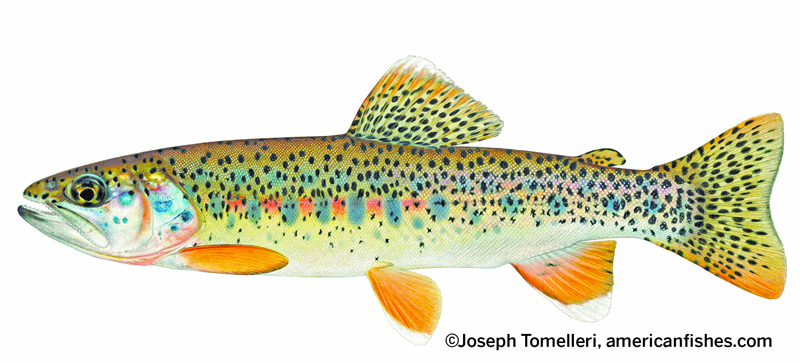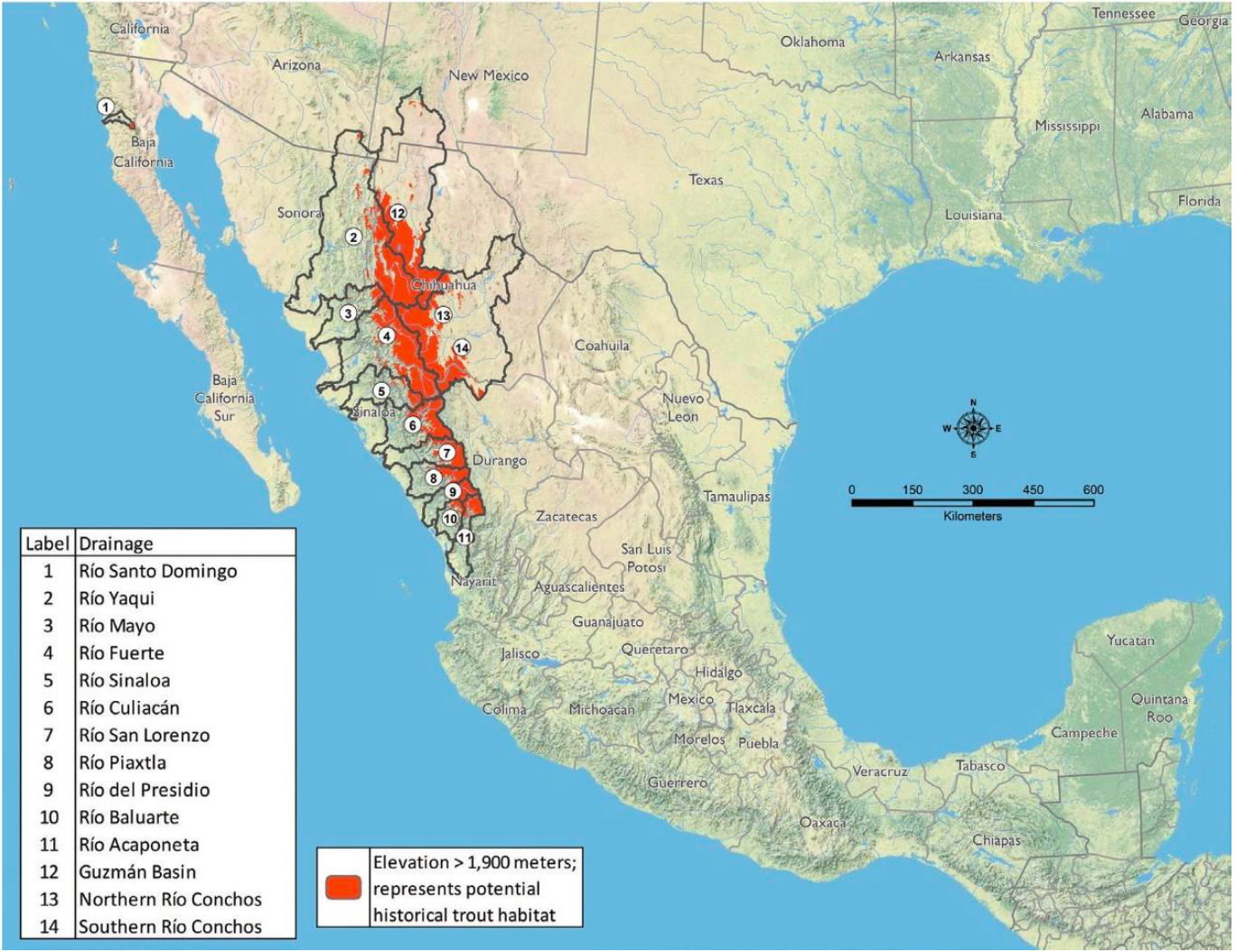
Top left: Acaponeta trout (Illustration: Joseph Tomelleri) Bottom right: Culiacán Golden trout (Illustration: Joseph Tomelleri)
Like many others I'm sure, I found that working from home facilitated catching up on housecleaning, etc. Picking away at the long-standing task of re-housing old family photos, I came across one of me heading out trout fishing with my Dad.

Young Dean, ready to go fishing with dad...
It got me reflecting on what a big role that group of fishes has always played in my life. From diapers through late teens, I spent all of most every summer at that family cabin on an Arizona mountain stream stocked with non-native Rainbow, Brown and Brook Trout. I was pretty good at fishing, and quickly addicted. Anyone under 14 fished free, but could take only a half limit. Since I could almost always catch more than 5 a day, starting about age 9 I invested annually in a license (I think Mom may have picked up the bill to start - she loved pan-fried trout for breakfast!). By my early teens, deeply into fly fishing, which provided great insights into aquatic biodiversity and ecology, my career plan focused. Then my first real job, as an undergraduate, sent me deep into New Mexico's Gila Wilderness for a delightful summer with my supervisor, a couple of mules, and a backpack fish shocker, to sample the endangered Gila trout for genetic research. I was in heaven and never looked back. Another degree and a couple jobs later, while sampling fishes in the remote mountains of Chihuahua, Mexico, my shocker turned a trout that looked like a rainbow, but differed in many ways. The scientific literature then documented only one native Mexican species (not the one I'd caught) and most experts believed other records of trout in that country represented introduced rainbows imported from California. That conclusion was anything but solid, and it was clear that huge areas had yet to be sampled.
A decade later I got this job in Texas. No native trout here (though perhaps there was one in the Davis Mountains 150 years ago or so), but it's close to Mexico, and I started organizing exploratory sampling trips with diverse colleagues. Though basically personally-funded "vacation" trips to start, science was behind it all, specimens were collected and preserved, and eventually we got some funding. Our work, ranging from not far southwest of El Paso to as far south as the mountains right behind Mazatlán (across from the tip of Baja California) revealed a pretty amazing diversity of widely scattered, highly isolated trout populations throughout the highest elevations of the Sierra Madre Occidental. All are indeed relatives of Rainbow Trout, but quite distant ones, all in a single, but very diverse, evolutionary lineage. Surprisingly there's actually more genetic diversity of trout native to Mexico than there is throughout the entire native range of the very thoroughly studied Rainbow Trout of Pacific coastal drainages from northern Baja California through California to the Aleutian Peninsula of Alaska. The Mexican forms are amazingly colorful and variable, but unfortunately, both difficult to describe scientifically and critically endangered.
A relatively non-technical brief overview of the project and recent conservation status reviews of the species is now available (http://dx.doi.org/10.26153/tsw/8755, and readers can find out more about these gorgeous fishes via the Hendrickson Lab's web page for the project: https://sites.cns.utexas.edu/hendricksonlab/mexican-trout-truchas-mexicanas
Dean Hendrickson is Curator in the Ichthyology Collection

Northern Conchos trout (Illustration: Joseph Tomelleri)

Piaxta trout (Illustration: Joseph Tomelleri)




